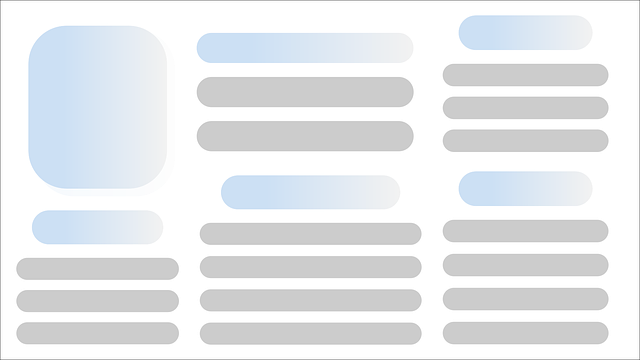To select the best health insurance plans, start by evaluating your personal and family medical history, determining coverage needs. Understand different plan types (HMOs, PPOs, high-deductible) based on healthcare requirements and budget. Prioritize network coverage to ensure easy access to preferred doctors and hospitals. Analyze financial details: deductibles, co-pays, out-of-pocket maximums. Consider add-ons like dental, vision care, wellness programs for comprehensive benefits. During enrollment periods, reassess needs and compare plans strategically. Make an informed decision balancing affordability with adequate protection.
Choosing the best health insurance plan can feel overwhelming, but this guide is your compass. Understanding your health needs and personal medical history is step one. Next, explore insurance types like HMO, PPO, and high-deductible plans to align with your budget and preferences.
Learn how network coverage impacts accessibility, compare benefits and costs, consider add-ons, and master enrollment periods. This comprehensive approach ensures you select the ideal plan from the best health insurance options available.
Understanding Your Health Needs: Assessing Your Personal and Family Medical History

Understanding your current and potential health needs is a crucial step in choosing the best health insurance plans. Begin by assessing your personal medical history – any ongoing conditions, recent surgeries, or regular check-ups. Consider too any family medical histories; genetic predispositions can significantly impact your long-term health and insurance coverage requirements.
These insights will help you identify essential features to look for in health insurance plans. For instance, if you have a history of chronic illnesses, comprehensive coverage and access to specialist care might be more important than cost. Conversely, younger individuals without significant health concerns may prioritize plans with lower deductibles and more flexible options.
Exploring Insurance Types: Options Like HMO, PPO, and High-Deductible Plans Explained

When exploring health insurance options, understanding different types is key to finding the best health insurance plan for your needs. HMO (Health Maintenance Organization) plans offer a cost-effective choice where you typically have fewer healthcare provider options but pay less out of pocket. PPO (Preferred Provider Organization) plans provide more flexibility, allowing you to visit any doctor within the network with lower costs, and often include out-of-network coverage for emergency situations.
High-deductible plans, another popular option, come with lower monthly premiums but require higher out-of-pocket expenses before insurance starts covering costs. These plans are ideal for individuals in good health who want to save money on premiums but can afford the potential higher out-of-pocket costs if they need significant medical care. Comparing these options and considering your healthcare needs, budget, and preferred level of flexibility will help guide you towards the best health insurance plan for your situation.
Network Coverage Analysis: How to Choose a Plan with Doctors and Hospitals in Your Region

When selecting a health plan, understanding network coverage is paramount. The best health insurance plans offer extensive networks of doctors and hospitals within your region. This ensures easy access to healthcare services when you need them most. Start by reviewing the provider directory for each plan to confirm that your regular physician is in-network, along with specialist care and hospitals where you might require treatment.
Check if the plan covers your preferred medical facilities and consider the geographic reach of the network. Some plans may have limited coverage in rural areas or specific regions within a state. A robust network that spans your region offers greater flexibility and convenience when accessing healthcare services, ensuring peace of mind knowing you’re covered where you need it most.
Benefits and Cost Comparison: Deciphering Deductibles, Co-Pays, and Out-of-Pocket Maximums

When comparing the best health insurance plans, understanding the financial aspects is crucial. Benefits and cost comparison involves deciphering key terms like deductibles, co-pays, and out-of-pocket maximums. Deductibles represent the amount you must pay for covered healthcare services before insurance kicks in, while co-pays are fixed amounts you pay alongside insurance for specific services. Out-of-pocket maximums cap your total expenses for a policy year, ensuring no single bill exceeds this limit.
Evaluating these components allows you to balance potential out-of-pocket costs with the scope of coverage. Higher deductibles often mean lower premiums, but you’ll need to budget accordingly. Conversely, lower deductibles come with higher premiums. Co-pays vary by service, affecting overall expenses for doctor visits and medications. Understanding these dynamics is essential when selecting a plan that aligns with your healthcare needs and financial constraints among the best health insurance plans available.
Extras to Consider: Evaluating Add-ons Like Dental, Vision, and Wellness Programs

When evaluating the best health insurance plans, don’t overlook the value of additional perks. Beyond the core coverage, many providers offer a range of extras that can significantly enhance your overall wellness and peace of mind. Dental care is an essential aspect of overall health, so consider a plan that includes dental coverage. This can help prevent costly procedures down the line by covering regular check-ups, cleanings, and even major restorative work. Similarly, vision care is another often-overlooked but critical component of healthcare. Plans with built-in vision coverage can detect early signs of eye conditions, provide prescription eyewear or contact lenses, and reduce out-of-pocket expenses for these essential items.
But it’s not just about dental and vision; wellness programs are also valuable add-ons. These initiatives often include fitness challenges, mental health support, nutritional guidance, and more. By encouraging proactive health management, these programs can help you lead a healthier lifestyle. Look for plans that integrate such initiatives, as they show a commitment to supporting members’ holistic well-being. When considering the best health insurance plans, remember that comprehensive coverage isn’t just about hospital visits; it’s also about maintaining and promoting good health through these additional services.
Enrollment and Changes: Navigating Open Enrollment Periods and Life Event Updates

Navigating enrollment periods is crucial for securing the best health insurance plans that suit your needs and budget. Open enrollment, typically occurring annually, offers a window to enroll in or change your healthcare coverage. It’s the perfect time to assess your current plan and explore available options in light of any life changes. These updates might include marriage, having a child, moving to a new area, or changing employment status.
During open enrollment, carefully review the benefits offered by different plans, considering factors like network size, coverage limits, and out-of-pocket expenses. This strategic approach ensures you make informed decisions, allowing you to transition smoothly to a plan that aligns with your healthcare requirements and financial considerations.
Making an Informed Decision: Tips for Selecting the Best Health Insurance Plan for Your Budget

Making an informed decision about your health insurance plan is crucial, especially given the numerous options available in today’s market. The key to selecting the best health insurance plans lies in understanding your budget and prioritizing your healthcare needs. Begin by evaluating your current medical requirements and anticipated future ones—this will help you decide on the level of coverage needed.
Consider your financial situation and set a budget for your insurance premiums. Research various plans, comparing their costs, benefits, and exclusions. Look for options that offer comprehensive coverage within your price range. Remember, the best plan isn’t always the cheapest; it should strike a balance between affordability and adequate protection. Reviews and recommendations from trusted sources can also guide you in choosing the top health insurance plans suiting your budget.
